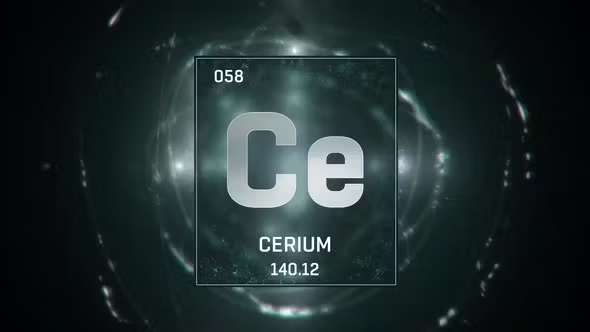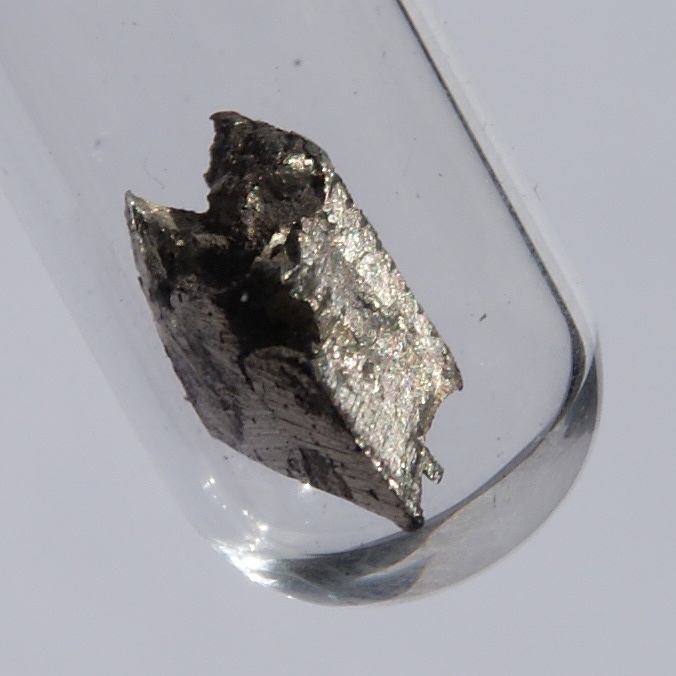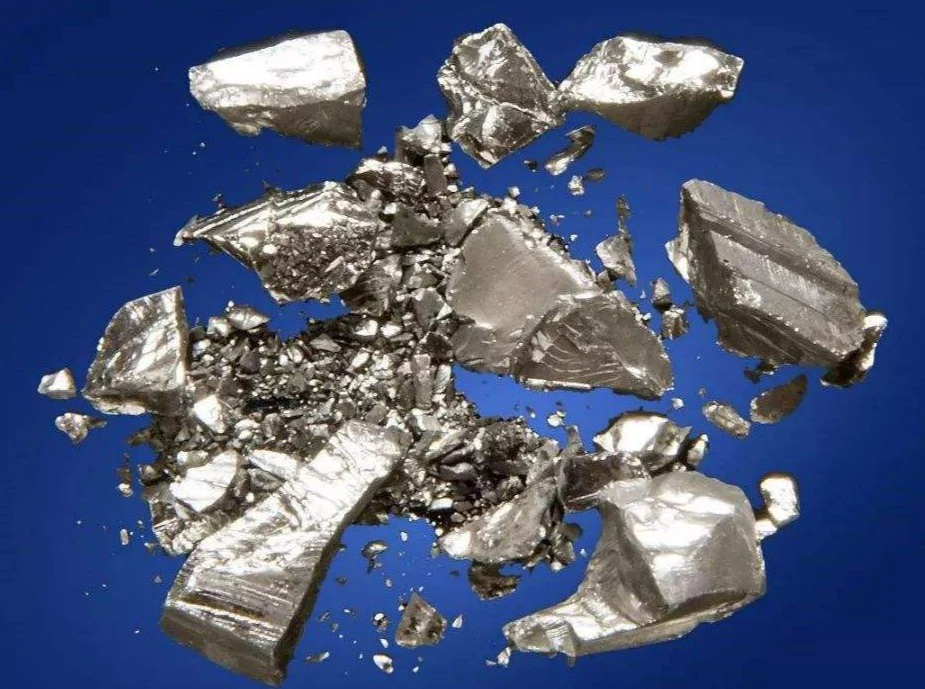Identity.
Cerium, element number 58, is a double agent in the world of elements.
Nicknamed "rare earth," it's actually more common than lead, hiding in
plain sight within rocks and minerals. This soft, silvery metal is a
chameleon, readily changing colors due to its reactive nature. In its
pure form, it shines silver, but quickly tarnishes in air, forming a
golden oxide coat. Don't underestimate its hidden fire, though -
cerium shavings can ignite with just a scratch! This fascinating
element fuels our modern world, lurking in lighter flints, TV screens,
and even car parts, proving that sometimes the most remarkable things
come in unexpected packages.
Atomic Structure:
The nucleus consists of 58 protons (red) and 82 neutrons (blue). 58
electrons (green) bind to the nucleus, successively occupying
available electron shells (rings). Cerium is a lanthanide in period 6,
and the f-block of the periodic table. It melts at 795 degrees
Celsius.
History.
Cerium, element number 58, is a double agent in the world of elements.
Nicknamed "rare earth," it's actually more common than lead, hiding in
plain sight within rocks and minerals. This soft, silvery metal is a
chameleon, readily changing colors due to its reactive nature. In its
pure form, it shines silver, but quickly tarnishes in air, forming a
golden oxide coat. Don't underestimate its hidden fire, though -
cerium shavings can ignite with just a scratch! This fascinating
element fuels our modern world, lurking in lighter flints, TV screens,
and even car parts, proving that sometimes the most remarkable things
come in unexpected packages.
The nucleus consists of 58 protons (red) and 82 neutrons (blue).
58 electrons (green) bind to the nucleus, successively occupying
available electron shells (rings). Cerium is a lanthanide in
period 6, and the f-block of the periodic table. It melts at 795
degrees Celsius.
From its dual discovery to its ever-expanding uses, cerium's
history is a testament to scientific curiosity and human
ingenuity. This seemingly ordinary element holds secrets yet to be
revealed, reminding us that even the familiar can surprise us with
hidden depths.
Usage.
From fiery flickers to sparkling surfaces, cerium's uses are
surprisingly diverse. It ignites our lighters, polishes our gadgets to
a shine, and even helps clean car emissions, all thanks to its unique
properties. Its pyrophoric nature fuels the sparks, its fine-grained
oxide brings a dazzling polish, and its catalytic capabilities
contribute to a cleaner environment. This hidden champion proves that
even seemingly ordinary elements can pack a powerful punch in our
everyday lives.
-
Sparking Innovation: Cerium's unique ability to ignite
easily make it the key ingredients in modern light flints. When
scaraped, cerium shaving readlily react with air, generating a
spark to light your flame. this property also find use in
pyrotechines creating dazzling effects in fire works and stage
shows
-
Polishing to Perfection:Cerium oxide, also known as ceria,
is a champion polisher. Its fine-grained structure and mild
abrasiveness make it ideal for restoring clarity and shine to
glass, ceramics, and even gemstones. From polishing lenses in your
eyeglasses to highlighting the sparkle of jewelry, cerium plays a
hidden role in everyday objects.
-
Cleaning Up the Act:Cerium's catalytic prowess shines in
automotive catalytic converters. As exhaust gases flow through,
ceria helps convert harmful pollutants like nitrogen oxides into
cleaner emissions. This contribution to greener technology makes
cerium a silent hero in our fight for cleaner air.
Some of the benefits of using Cerium are:
-
While research is ongoing, studies suggest cerium supplements
might benefit brain function and memory, potentially aiding in
conditions like Alzheimer's or Parkinson's. Its antioxidant
properties are thought to combat free radicals that damage brain
cells.
-
Cerium shows promise in clean energy technologies. Its unique
oxidation states make it a potential candidate for superconductors
and advanced batteries, paving the way for more efficient and
sustainable energy solutions.
-
As a potent antioxidant, cerium may help shield cells from harmful
free radicals linked to various diseases like cancer and
cardiovascular issues. Its ability to regenerate its antioxidant
activity even adds to its potential effectiveness.
-
Researchers are exploring cerium's potential in wound healing and
regenerative medicine. Its anti-inflammatory properties and
ability to promote cell growth might offer new solutions for
tissue repair and treatment of chronic wounds.
Sources.
While dubbed "rare," cerium is surprisingly abundant, hiding in plain
sight within Earth's crust. Its primary hiding spots are minerals like
monazite and bastnasite, found in beach sands, riverbeds, and even
mines. Extracting cerium involves a multi-step process, separating it
from its fellow mineral companions through techniques like crushing,
grinding, and chemical processing. Though not as "magical" as its name
might suggest, cerium's journey from hidden gem to everyday hero is a
testament to human ingenuity and our ability to unlock the hidden
potential within ordinary elements.
Properties.
Reactive Sparkplug: Cerium readily reacts with air, forming a
protective oxide layer. This reactivity even gives it pyrophoric
properties, meaning its shavings can ignite spontaneously! This fiery
side makes it perfect for lighter flints and pyrotechnics.
Polishing Prowess:Cerium oxide (ceria) boasts a fine-grained
structure and mild abrasiveness, making it a champion polisher. It
shines in restoring clarity and shine to glass, ceramics, and
gemstones, offering a hidden touch of sparkle to everyday objects.
Catalytic Clean-Up: Ceria plays a hidden role in the fight for
cleaner air. As a key component in automotive catalytic converters, it
helps convert harmful pollutants like nitrogen oxides into less
harmful emissions. This catalytic prowess proves cerium's hidden
benefit for a greener future.


